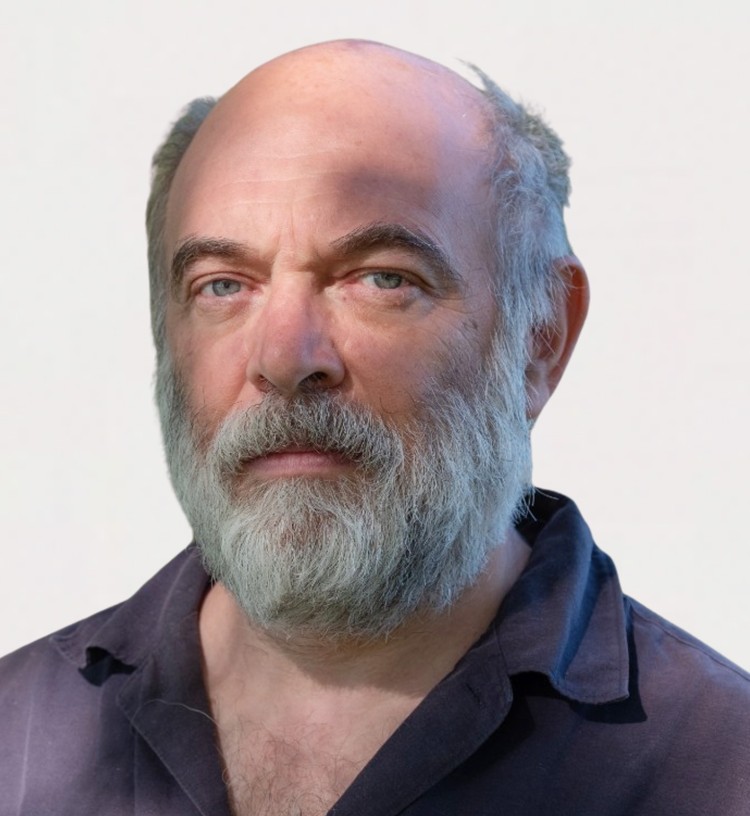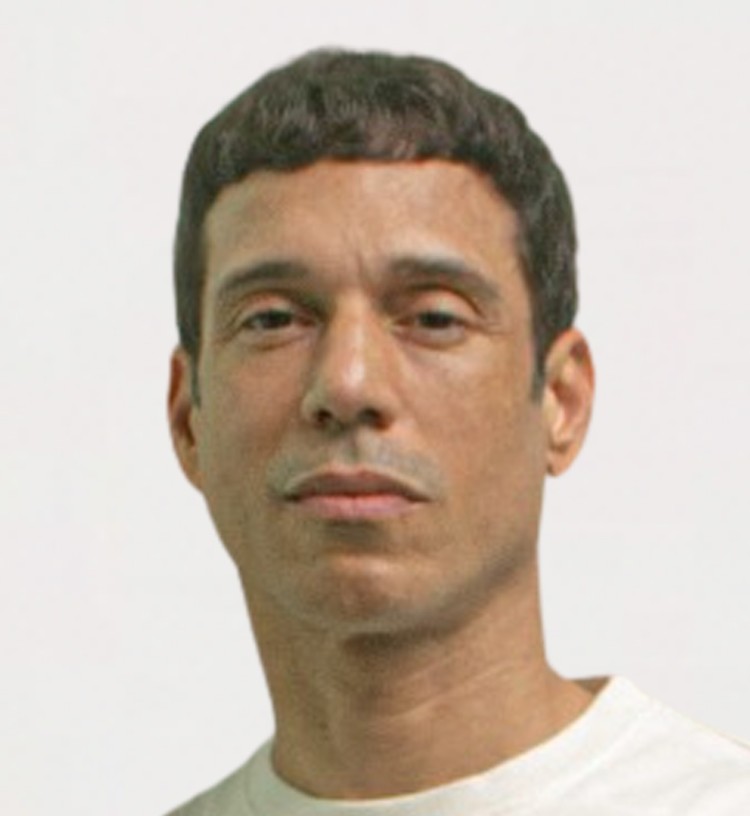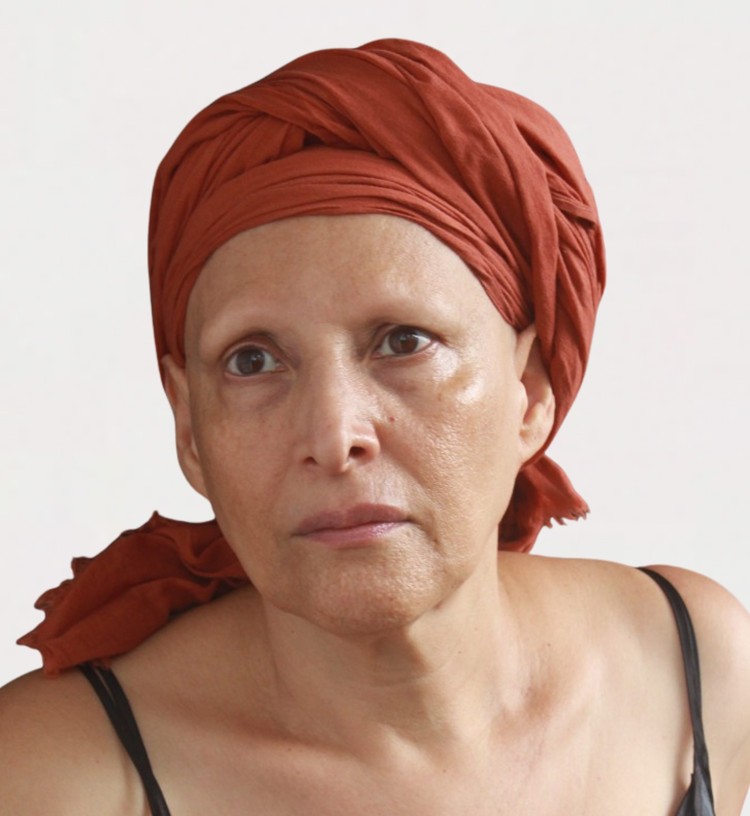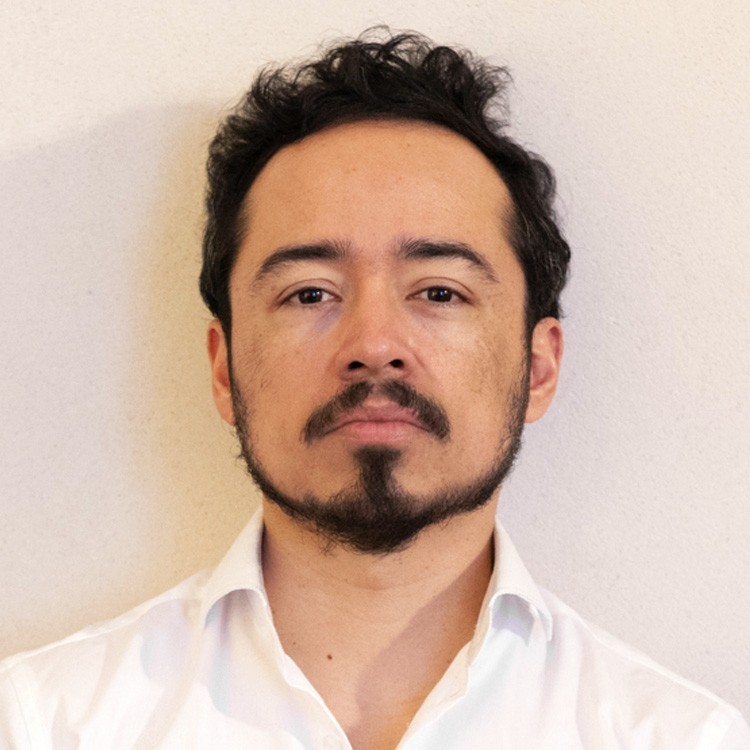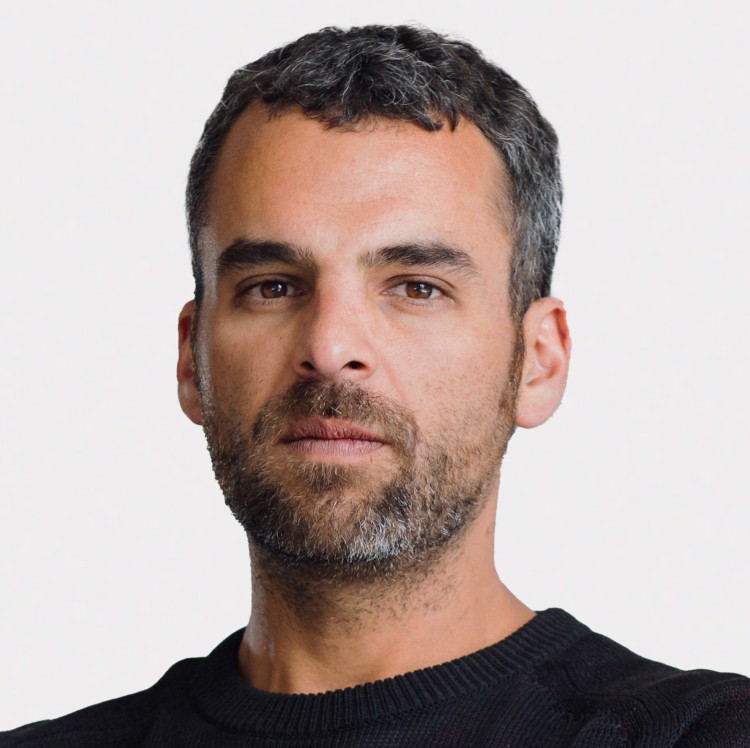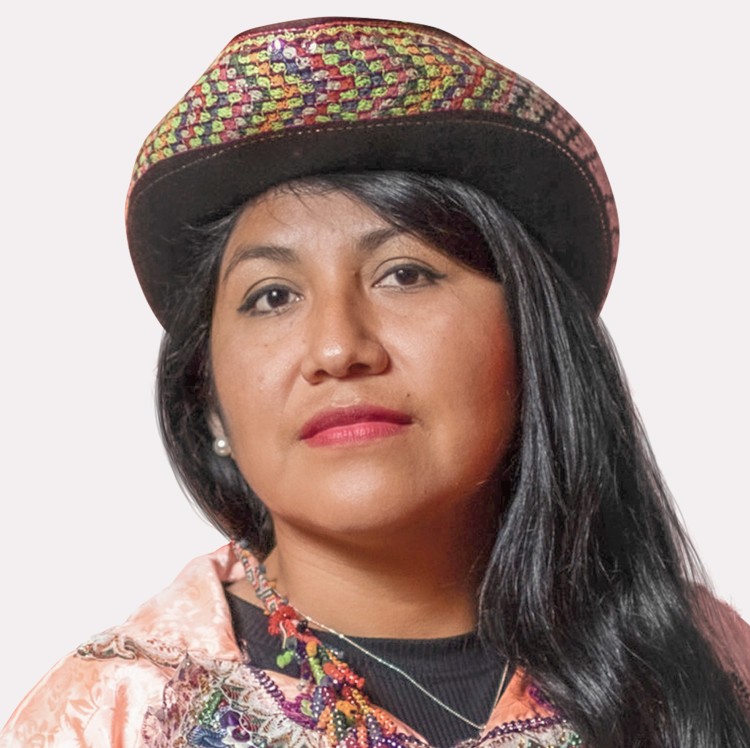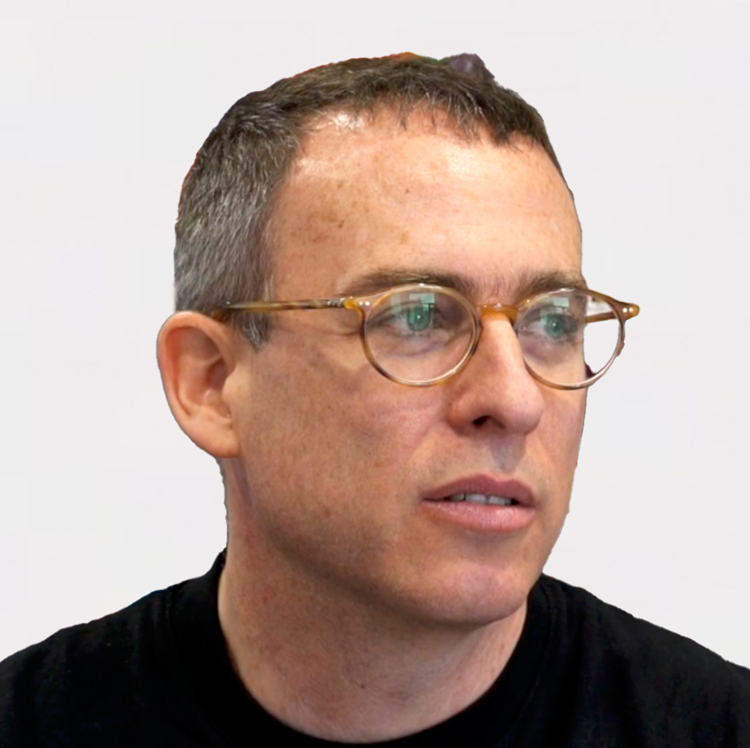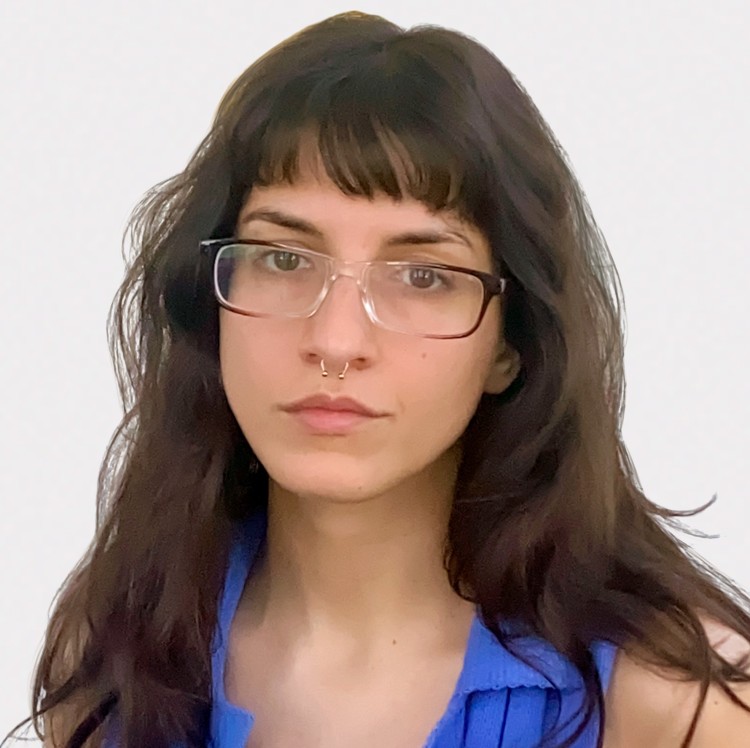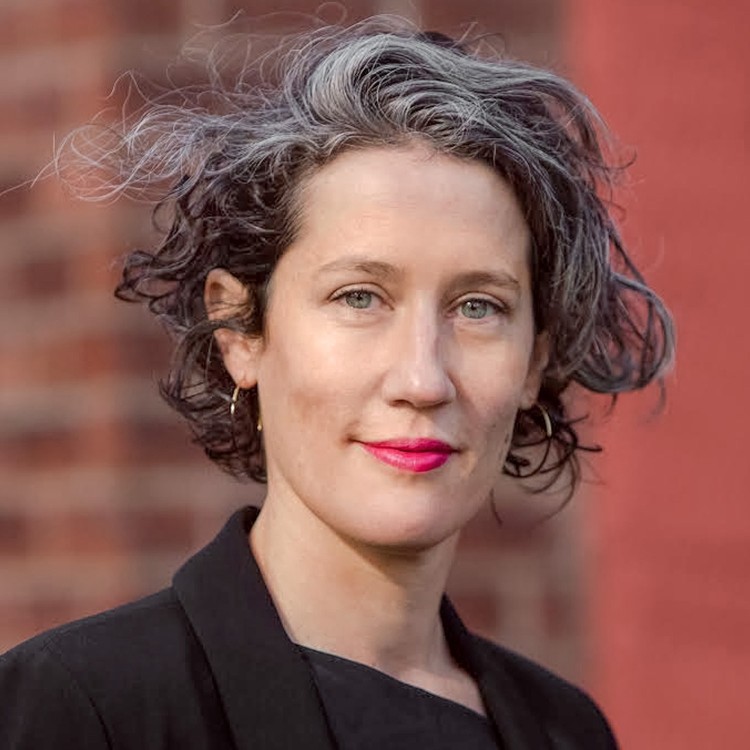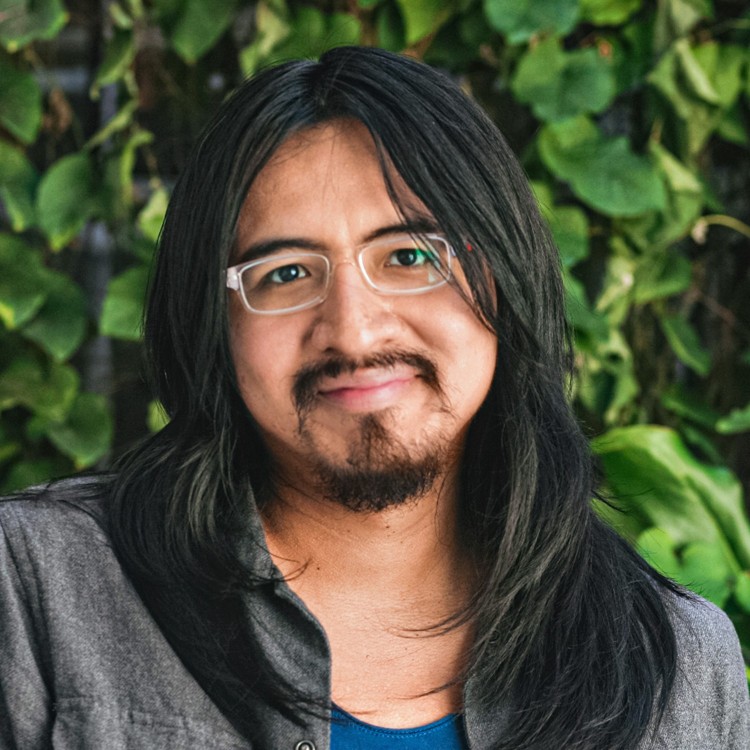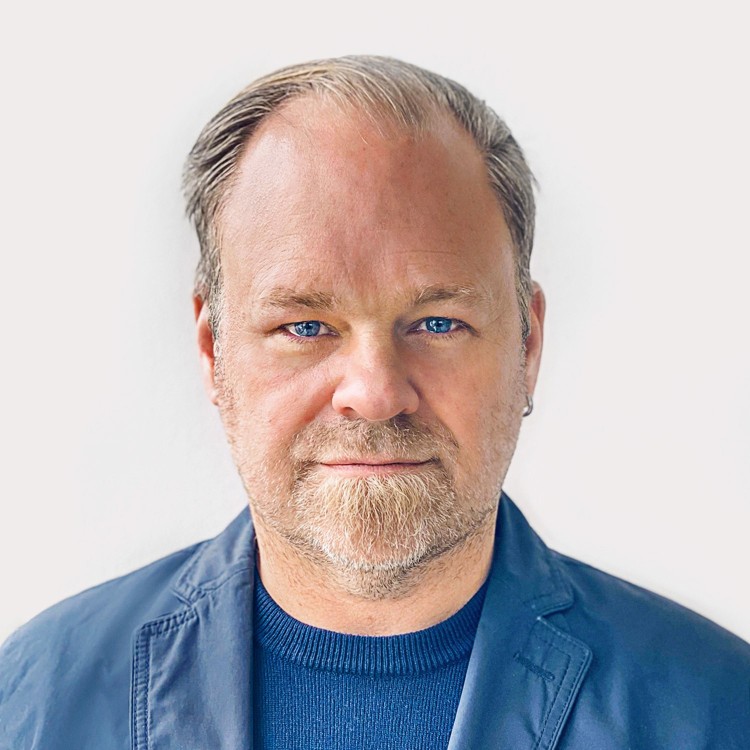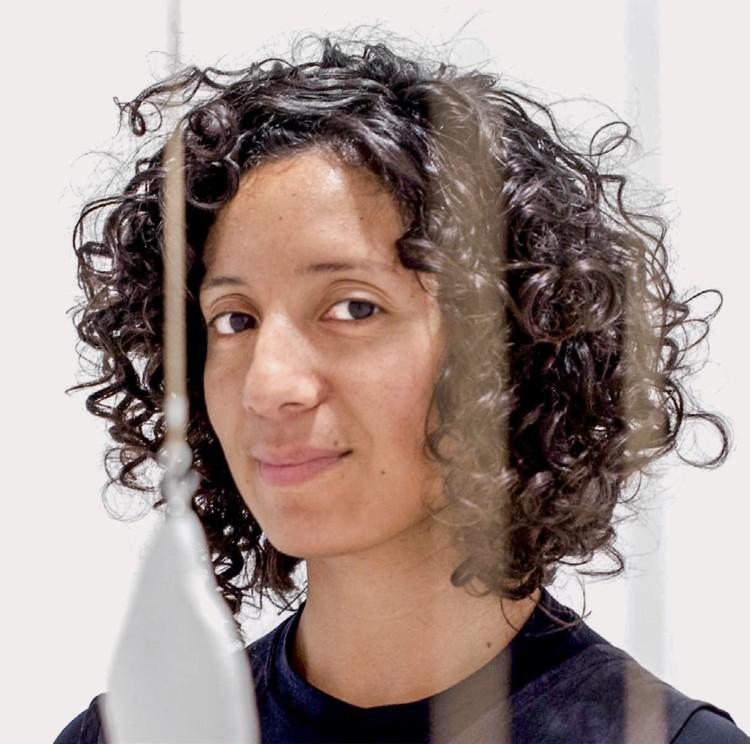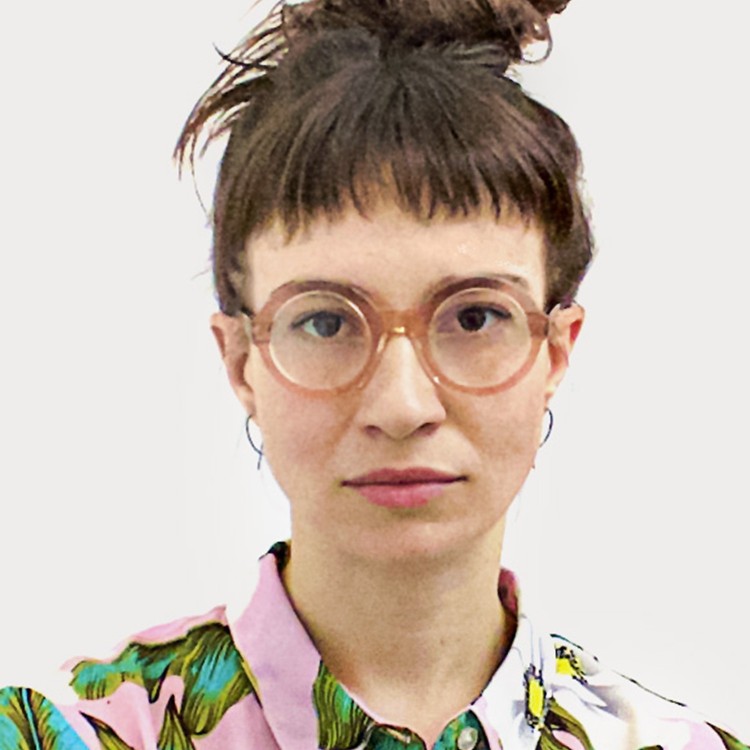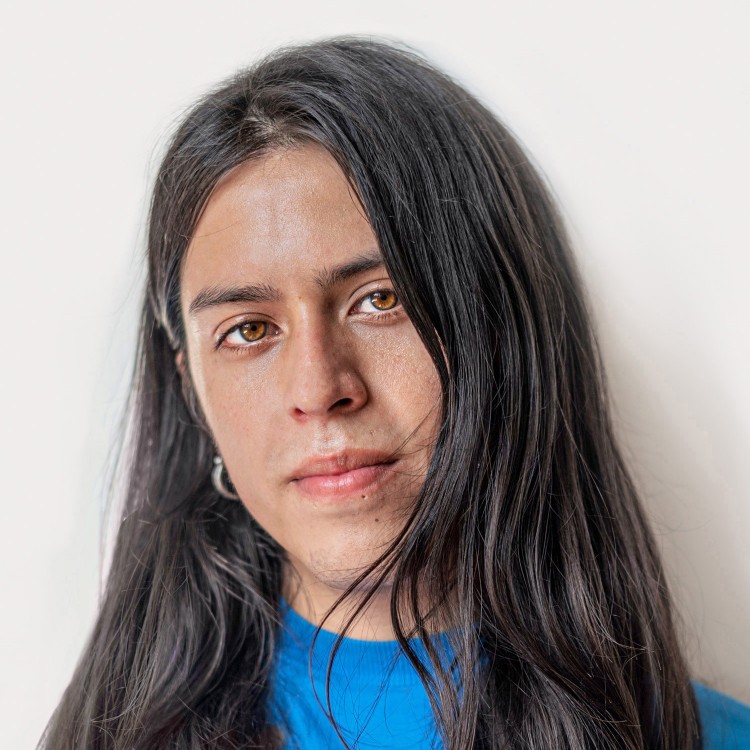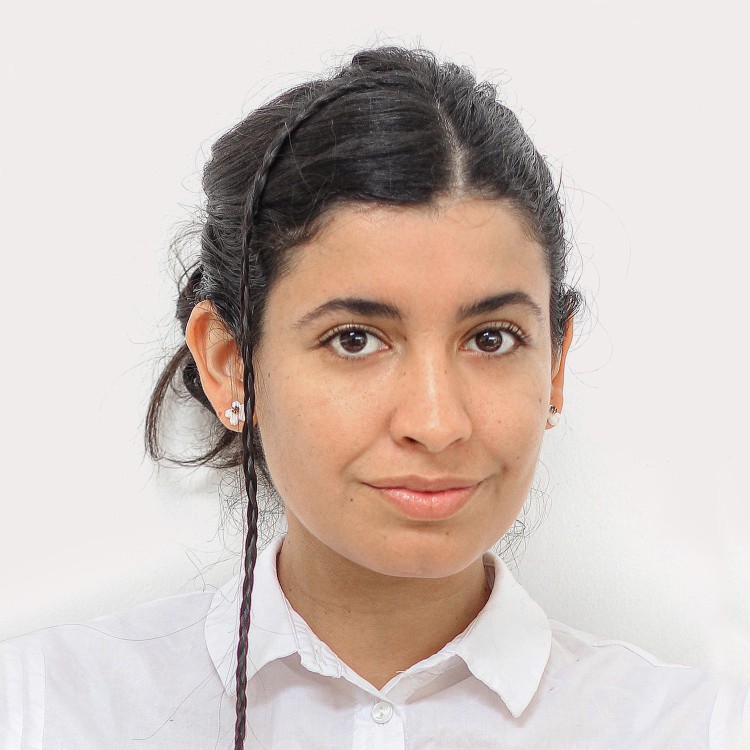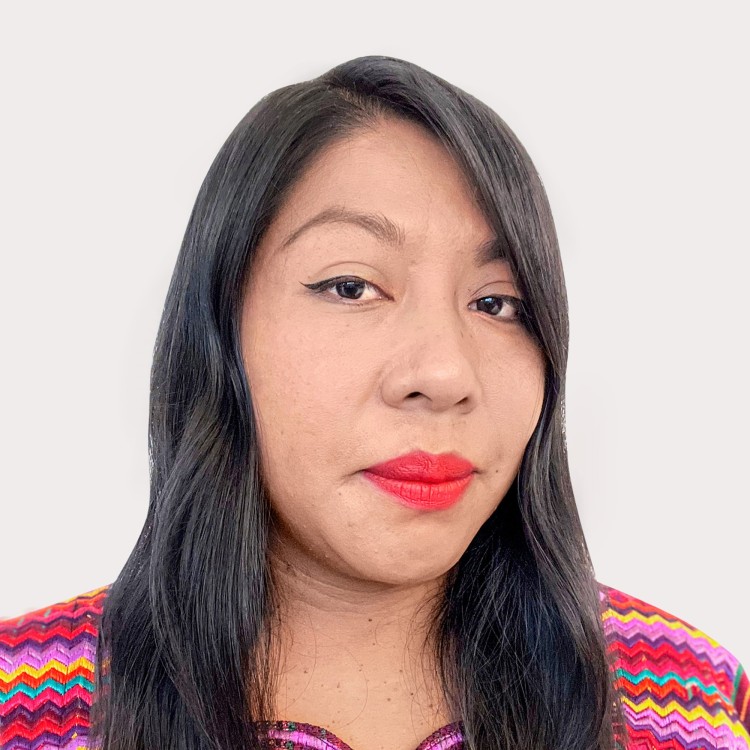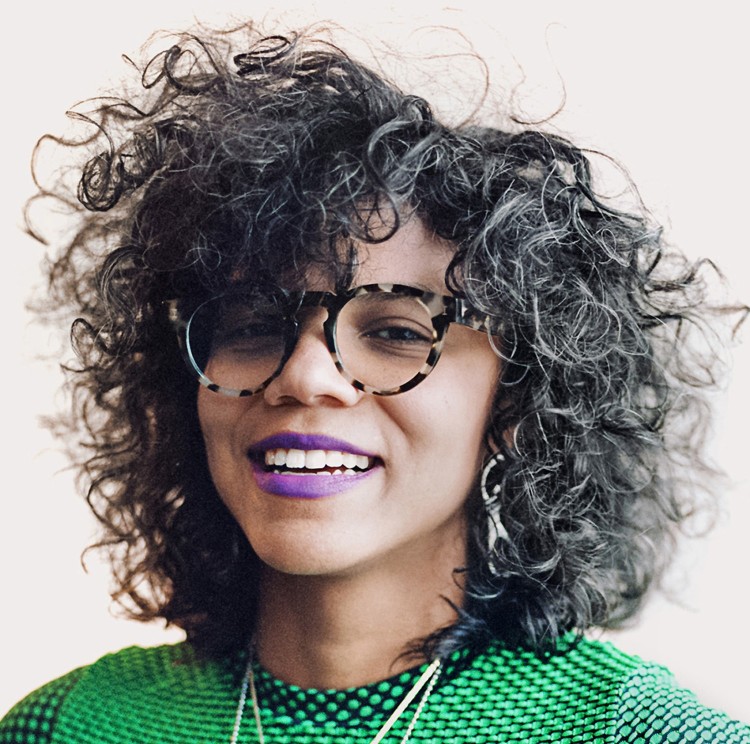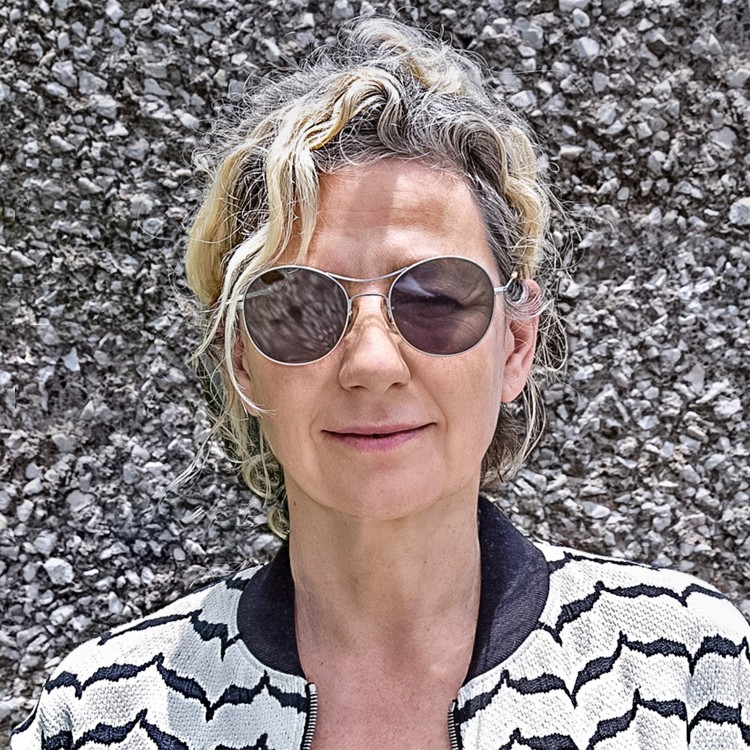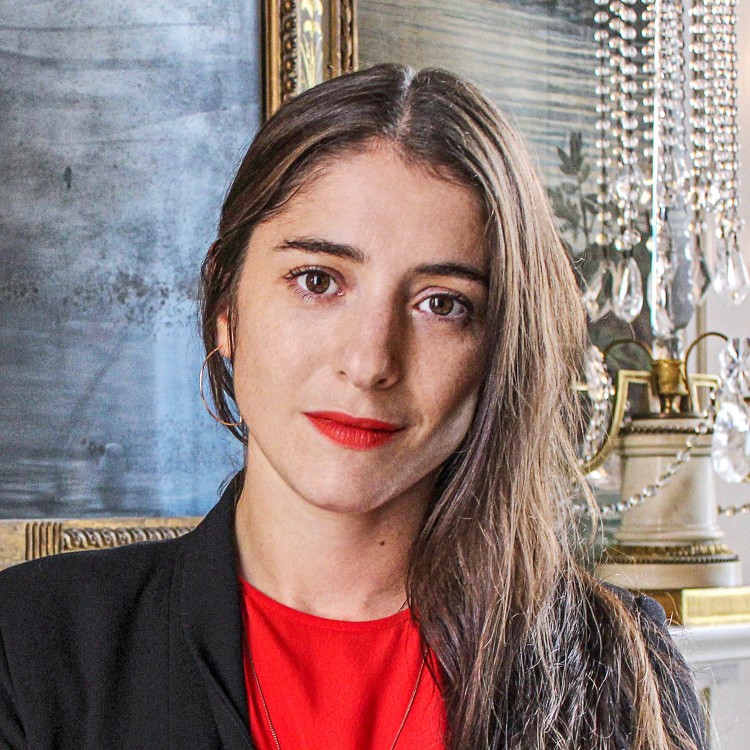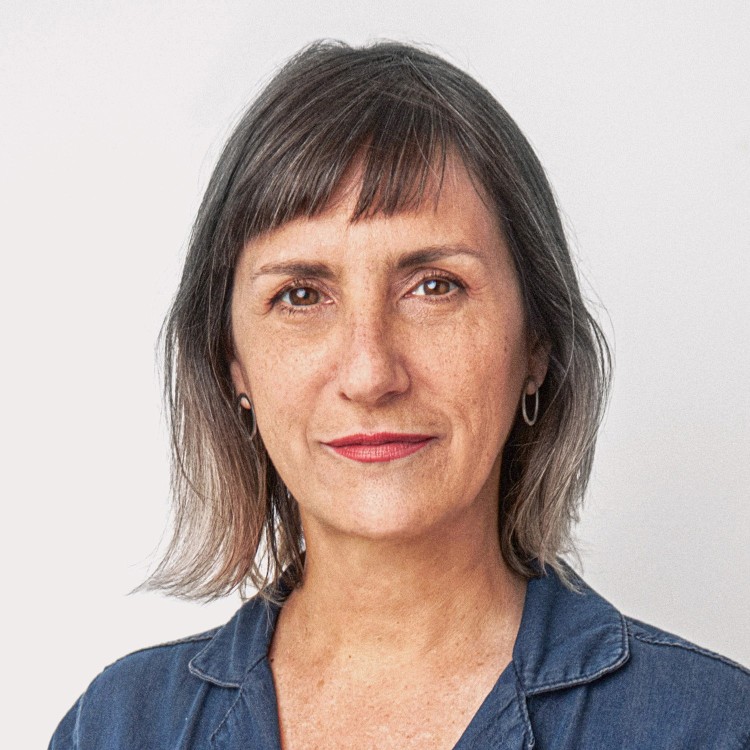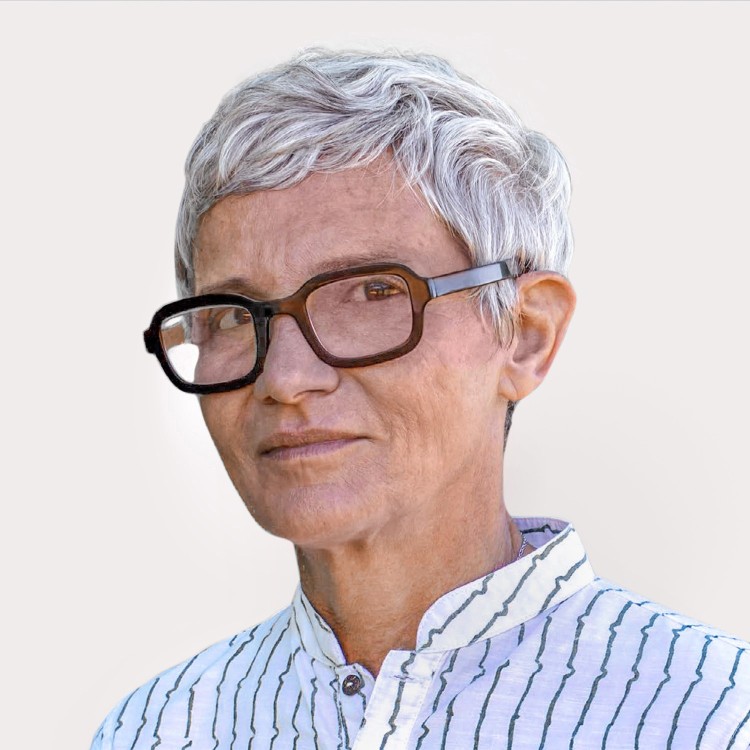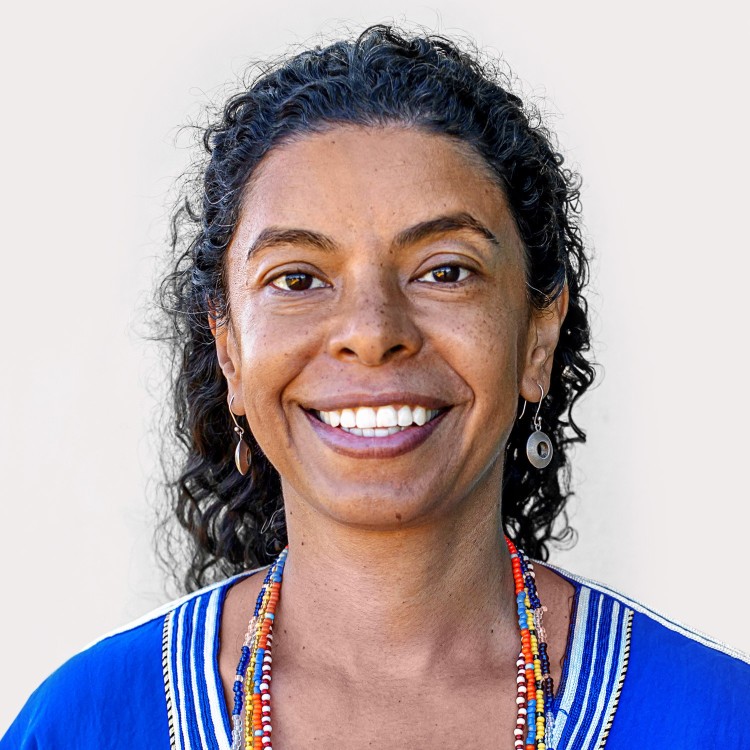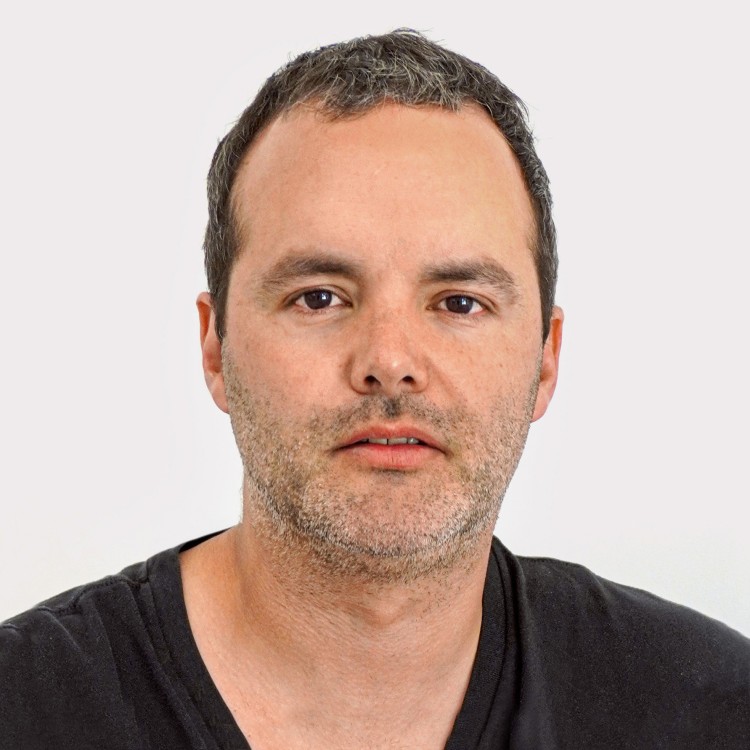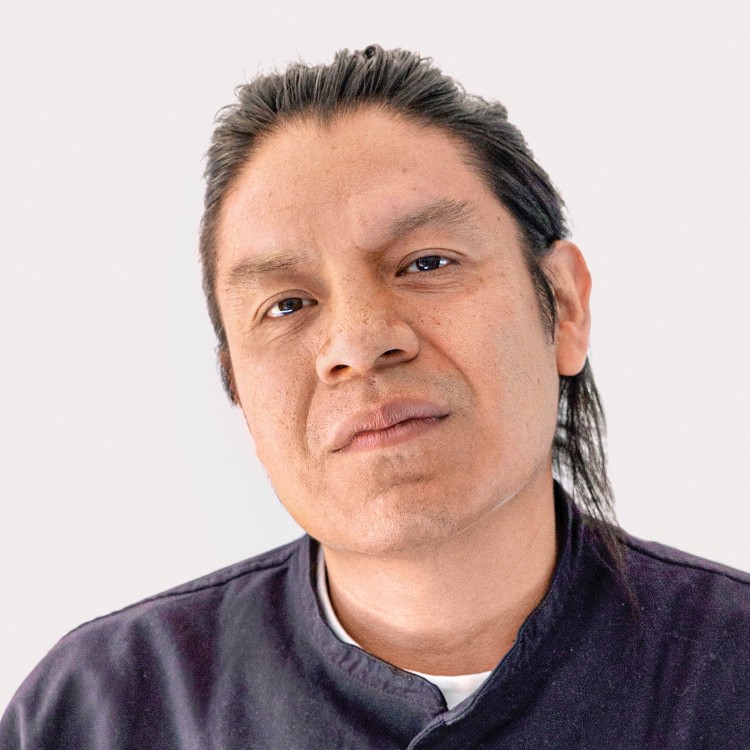Pablo León de la Barra earned his Ph.D. in Histories and Theories from the Architectural Association in London. Since 2013, he has served as Curator for Latin America at the Guggenheim Museum in New York. Over more than two decades of curatorial practice, he has organized numerous exhibitions and was co-curator of the Santa Fe Biennial, New Mexico (2017), as well as curator of the Mexico Pavilion at the Venice Biennale in 2017. In 2012, he received the inaugural Travel and Research Grant from Independent Curators International and the Patricia Phelps de Cisneros Collection. He serves on several advisory boards, including the Luis Barragán Foundation (Mexico), Ruta del Castor (Mexico City), the Nasher Sculpture Prize Jury (Dallas), the Technical Commission of the Centro Andaluz de Arte Contemporáneo (Seville), and as President of the Jury for the Prince Claus Fund Impact Awards (Netherlands, 2022 and 2024). Born in Mexico City, he currently lives and works in Rio de Janeiro.
Ed #52026
Jury
Pablo León de la Barra
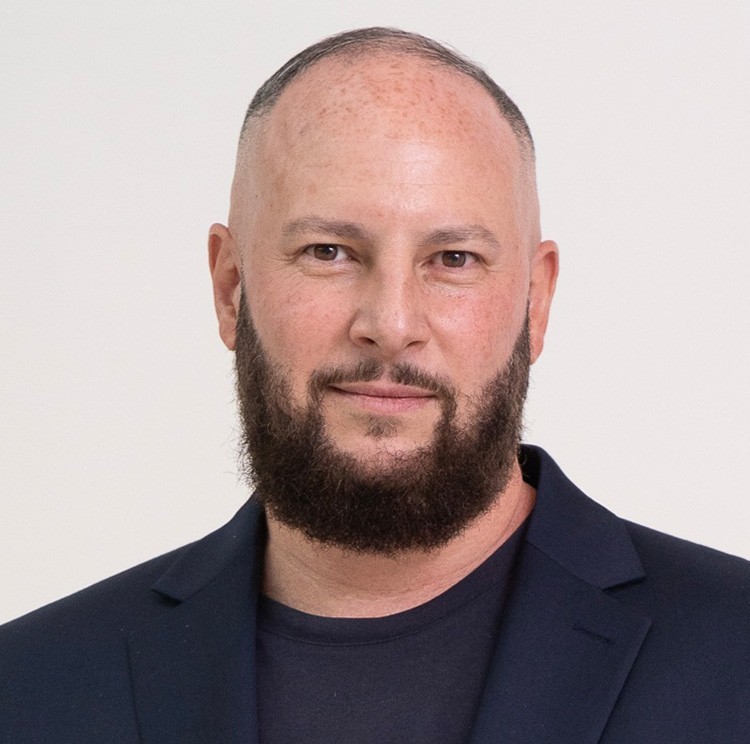
Ed #52026
Jury
Inés Katzenstein

Inés Katzenstein is Curator of Latin American Art and the inaugural Director of the Patricia Phelps de Cisneros Research Institute for the Study of Art from Latin America at The Museum of Modern Art, New York. At MoMA she has organized two major exhibitions based on the Patricia Phelps de Cisneros Gift: Sur moderno, Journeys of Abstraction, in 2018 (with Maria Amalia García) and Chosen Memories, in 2023. She has also participated in the curatorial team of Greater New York in 2022 (MoMA PS1) and curated Carolina Caycedo´s Spiral for Shared Dreams (MoMA, 2024). Prior to joining MoMA, she was the founding director of the Art Department at Universidad Torcuato Di Tella, in Buenos Aires, where she created and oversaw an educational program for artists and curators, as well as an exhibition program, from 2008 to 2018. Simultaneously, she curated exhibitions of artists such as Liliana Porter, Guillermo Kuitca, Marcelo Pombo and David Lamelas, among others. Previously, she was Curator at Malba-Fundación Costantini. She holds a master’s degree from the Center for Curatorial Studies at Bard College, and a BA from the Universidad de Buenos Aires.
Ed #52026
Jury
Manuel Segade

Manuel Segade holds a degree in Art History from the University of Santiago de Compostela and completed a predoctoral residency at the University of Leeds with pioneering feminist theorist Griselda Pollock. From 1998 to 2008, he researched the cultural history of late 19th-century aesthetic practices and the gender politics of modernity, the subject of his essay Narciso Fin de Siglo (Melusina, 2008). He has served as Content Coordinator at Metrònom Fundació Rafael Tous d’Art Contemporani (2005–2006) and as Chief Curator at the Centro Galego de Arte Contemporánea (2007–2009), where he organized solo and group exhibitions featuring artists such as Susan Philipsz, Carme Nogueira, and Clemens von Wedemeyer. Between 2015 and 2023, he was Director of the Museo Centro de Arte Dos de Mayo (CA2M) of the Community of Madrid, and since June 2023 he has been Director of the Museo Nacional Centro de Arte Reina Sofía. As an independent curator, he has carried out more than sixty projects since 2003, including the Spanish Pavilion by Jordi Colomer at the Venice Biennale (2017) and Fin de partida, a history of the historical avant-gardes told through chess and Duchamp. He combines his curatorial work with research, critical writing, and teaching in international programs such as the Independent Studies Program (MACBA), the École du Magasin (Grenoble), and Michaelis University (Cape Town).
Ed #52026
Artist
Carlos Amorales (Mexico City, Mexico, 1970) experiments at the boundaries between image and sign through a variety of platforms: animation, video, film, drawing, installation, performance, and sound. His artistic research focuses primarily on language and the impossibility/possibility of communicating through media that are unrecognizable or uncodified—sounds, gestures, and symbols. As the basis for many of his explorations, Amorales has used the Liquid Archive, a project composed of shapes, lines, and nodes instead of words, which he began in 1998 and developed for over a decade. In addition to the Liquid Archive, he has created other alphabets and systems that he uses to translate texts ranging from museum labels to short stories. He studied in Amsterdam at the Gerrit Rietveld Academie and the Rijksakademie van beeldende kunsten. He has participated in artist residencies at Atelier Calder in Saché and MAC/VAL in Vitry-sur-Seine, France, as well as in the Smithsonian Artist Research Fellowship Program in Washington, D.C. He has exhibited in institutions such as the Phoenix Art Museum, Kurimanzutto New York, Museo Nacional de Arte Contemporáneo of Bucharest, Museo Kaluz, Stedelijk Museum, MUAC, Fridericianum and MALBA, among others. He represented Mexico at the 57th Venice Biennale (2017) and he has participated in numerous biennials. He lives and works in Mexico City.
Read moreEd #52026
Artist
Alejandra Seeber (Buenos Aires, Argentina, 1969) is an Argentine painter based in New York. Her work explores the shifting boundaries between abstraction and representation, often through depictions of domestic and architectural interiors that dissolve into layered, vibrant compositions. Seeber’s paintings merge intuition and structure, embracing chance, fragmentation, and spatial ambiguity. Influenced by music, stage design, urban culture, and digital aesthetics, she constructs visual spaces that are both dynamic and unstable. She studied at Prilidiano Pueyrredón School of Fine Arts, participated in the Beca Kuitca program for young artists, in Buenos Aires and attended Skowhegan School of Painting and Sculpture in Maine. Her work has been shown internationally, including Americas Society in New York, Museo de Arte Latinoamericano de Buenos Aires (MALBA), Häusler Contemporary, and is part of collections such as MALBA, the Zabludowicz Collection, and the Staatliche Graphische Sammlung in Munich. She has lived in NY since 1999.
Read moreEd #52026
Artist
Jonathas de Andrade (Maceió, Brazil, 1982) develops videos, photographs and installations based on the production of images and texts, employing strategies that juxtapose fiction and reality, tradition and negotiation with local communities. Based on the artist's interests in social issues, his works cross the field of language and anthropology as aspects that challenge the notion of truth, power, desire and social imaginary. He has held solo exhibitions such as Jonathas de Andrade: Eye–Spark, at Maat, Lisbon (2023) and Crac Alsace, France (2022); Pounce and Bounce at Pinacoteca de São Paulo (2023), In the hangover city, at Mamam, Recife (2023), Staging Resistance, at Foam Amsterdam (2022), One to One, at Museum of Contemporary Art Chicago (2019); The Fish, New Museum, New York (2017), The Power Plant, Toronto (2017), Visiones del Nordeste, Museo Jumex, Mexico City (2017), Museu do Homem do Nordeste, MAR: Museum of Art, Rio de Janeiro (2014-2015), and participated in group exhibitions, such as 16th Istanbul Biennial (2019), Artapes, MAXXI: National Museum of XXI Century Arts, Rome (2018); 32nd Sao Paulo Biennial (2016), Unfinished Conversations: New Work from the Collection, The Museum of Modern Art MoMA (2015); and Under the Same Sun: Art from Latin America Today, Guggenheim Museum, New York (2014). In 2022, Jonathas de Andrade presented an individual project for the Brazilian Pavilion at the 59th Venice Biennale in 2022.
Read moreEd #52026
Artist
Engel Leonardo (Baní, Dominican Republic, 1977) explores in his work the relationships between the human and history, architecture, and material culture. His production tends to be based on studies about Caribbean culture, modern tropical architecture, histories repressed by modernity, and the transmission of indigenous and African knowledge through objects commonly seen as artisanal, folkloric or ethnographic. Born and based in the Dominican Republic, the artist takes particular interest in the architectural and artisanal narratives that strain the notions of antillanía, tropicality, modernism, indigenous culture and Afro-atlantic culture. His work is included in the collections of the Museo Reina Sofía (Madrid), the Guggenheim Museum (New York), MASP (São Paulo), CNAP (Paris), Kadist (Paris–San Francisco), CPPC (New York–Caracas), and MAM (Santo Domingo). He has held solo exhibitions at MAC Niterói (Rio de Janeiro) and Kunsthalle Lissabon (Lisbon), and most recently has participated in group shows such as LGBTQIA+ Histories at MASP and Forecast Form: Art in the Caribbean Diaspora at MCA Chicago, ICA Boston, and MCASD San Diego. He has also taken part in the Nasher Prize Dialogues, organized by the Nasher Sculpture Center, and his long-term project Bahoruco has been presented in various locations across Europe, Latin America, and the Caribbean. He lives and works in Santo Domingo, Dominican Republic.
Read moreEd #52026
Artist
Patricia Belli (Managua, Nicaragua, 1964) holds a MFA from the San Francisco Art Institute (2001). She participated in Artists in Berlin Program Fellow, and was of the winners of the CIFO Arts 2024 Grants and Commissions Program. Belli has participated in multiple international exhibitions, including EVA, Ireland (2018, curated by Inti Guerrero), Berlin Biennial (2018, curated by Gabi Ngcobo), FEMSA, Mexico (2020-21, curated by Daniel Garza Usabiaga), and Carnegie International, USA (2022, curated by Sohrab Mohebbi). In 2001, she founded the Space for Artistic Research and Reflection (EspIRA), to encourage the sensitive and critical learning of Central American artists, which she directed for 20 years. Her work is included in the collections of the Tate Gallery in London, the KADIST Foundation in San Francisco, the Ortiz Gurdián Foundation in Nicaragua, the Museum of Contemporary Art and Design in Costa Rica, and the ArsTEOR/éTica Foundation. She lives and works in Managua.
Read moreEd #52026
Artist
Delcy Morelos (Córdoba, Colombia, 1967) studied at the Cartagena School of Fine Arts. Her practice is rooted in ancestral Andean cosmovision and the aesthetics of Minimal Art. Morelos’ abstract works, with their formidable evocations, inspire rumination on the interplay between human beings and earth, the human body and materiality. In her early works, Morelos focused primarily on painting, applying natural red pigments to paper. Her chromatic research directed her attention to the intersection between body and violence. Over time, her material investigations extended into ceramics and textiles, and this work, along with her continued use of natural materials such as earth, clay, fabric, and plant fibers, led her to gradually develop a more sculptural practice, and, more recently, large-scale multisensory installations. She has presented solo exhibitions at CAAC Centro Andaluz de Arte Contemporáneo in Seville, the Pulitzer Arts Foundation, Dia Chelsea, Museo de Arte Moderno de Buenos Aires, Fundación NC-Arte in Bogotá, Röda Sten Konsthall, and the Museo de Arte Moderno de Barranquilla, among others. She has also participated in the 59th Venice Biennale (2022), the Aichi Triennale, Japan (2022), the 7th Mercosur Biennial, Porto Alegre, Brazil (2009), ES2002 Tijuana / II International Biennial at Centro Cultural Tijuana (CECUT), Mexico (2002), and the 6th Havana Biennial, Cuba (1997). She lives and works in Bogotá.She lives and works in Bogotá.
Read moreEd #42025
Jury
Carla Acevedo-Yates

Carla Acevedo-Yates is a curator, writer, and researcher working across the Americas. She has curated over thirty exhibitions, including solo presentations on the work of Carolina Caycedo, David Lamelas, Johanna Unzueta, Claudia Peña Salinas, Duane Linklater, and Beatriz Santiago Muñoz. In 2015, she was awarded a Creative Capital | Andy Warhol Foundation Arts Writers Grant for an article on Zilia Sánchez. She is the former Marilyn and Larry Fields Curator and Director of Curatorial Initiatives at the MCA Chicago, where she curated the group exhibition Forecast Form: Art in the Caribbean Diaspora, 1990s-Today which traveled to ICA Boston and MCA San Diego, as well as entre horizontes: Art and Activism Between Chicago and Puerto Rico, among other exhibitions. She is the inaugural recipient of the CCS Bard Alumni Award, which recognizes an outstanding graduate of the Center for Curatorial Studies.
Ed #42025
Jury
Chus Martínez

Chus Martínez is currently the Head of the Institute of Art Gender Nature of the FHNW Academy of Arts and Design in Basel, Switzerland, and associate curator of TBA21 in Madrid/Venice. She is a board member of CIMAM and serves on the advisory boards of numerous international art institutions, including Castello di Rivoli, Turin and Deutsches Historisches Museum, Berlin. She has a background in philosophy and art history, and has been the Chief Curator at El Museo Del Barrio, New York and dOCUMENTA (13) Head of Department. Previously she was Chief Curator at MACBA, Barcelona, Director of the Frankfurter Kunstverein. Martínez has organized numerous exhibitions and publications with contemporary artists. She lectures and writes regularly including numerous catalogue texts and critical essays, and is a regular contributor to international journals. Recent publications include: The Complex Answer. On Art as a Non-Binary Intelligence (Sternberg Press, 2023), Like This. Natural Intelligence As Seen by Art (Hatje Cantz Verlag, 2022) y Corona Tales. Let Life Happen to You (Lenz, 2021).
Ed #42025
Jury
Eugenio Viola

Eugenio Viola, Ph.D., is the Artistic Director of MAMBO, the Bogota Museum of Modern Art in Colombia. From 2017 to 2019, he served as Senior Curator at PICA, the Institute of Contemporary Art in Perth, Australia. Between 2009 and 2016, Viola held various curatorial positions at the MADRE Museum in Naples, Italy. In 2015, he curated the Estonia Pavilion at the 56th Venice Biennale, and in 2022, he curated the Italian Pavilion at the 59th Venice Biennale. Viola will also curate the XXIV Paiz Art Biennial in Guatemala in 2025. Over his career, he has curated more than 100 exhibitions worldwide, collaborating with numerous international institutions. He has edited over 60 catalogs and books and has worked extensively with the American magazine Artforum and the Italian magazine Arte. His writings have been published in Flash Art, Exit Express, the Treccani Encyclopedia, and various international journals and publications.
Ed #42025
Artist
Guzmán Paz (Montevideo, Uruguay, 1988) is a painter, sculptor, and designer. His practice explores queer subjectivity through intimate narratives filled with playfulness and fantasy. He combines painting and meticulous craftsmanship in three-dimensional works, incorporating elements drawn from everyday life and the domestic sphere to create the landscapes and settings of his scenes: worlds born from the intersection of personal experiences and daydreams. His pieces reflect a clear love for painting, but also a drive to subvert, transform, or subtly parody its baroque potential. He is a member of the Básica TV collective. He lives and works between Uruguay and Argentina.
Read moreEd #42025
Artist
Voluspa Jarpa (Rancagua, Chile, 1971) examines political, historical, and social documents from Chile and Latin America to reflect on memory and cultural trauma. Her work offers a nuanced critique of history. She received the Illy Sustain Art Prize (2012) at ARCO Madrid, the Julius Baer Art Prize for Latin American Female Artists (2020), the Premio Adquisición at the 32nd Bienal de Cuenca (2023), and the CIFO Career Award (2024). Her works are held in major collections such as the MALBA (Buenos Aires), Kadist Foundation (San Francisco), Blanton Museum of Art (Austin), and Inhotim (Brazil). Jarpa has participated in notable exhibitions, including The Arcades: Contemporary Art and Walter Benjamin (Jewish Museum, New York, 2017), the Bienal do Mercosul (2011, 2015), the Istanbul Biennial (2011), the São Paulo Biennial (2014), and the Venice Biennale (2019), where she represented Chile with Altered Views.
Read moreEd #42025
Artist
Adán Vallecillo (Danlí, Honduras, 1977) studied Sociology and Art in Honduras and Puerto Rico. The methodology of his practice is grounded in on-site research, aimed at reassigning materials and social situations that are then translated into an aesthetic language. His work in painting, sculpture, and installation—rooted in performance—explores the intersections between contemporary art and social criticism. Through his projects, he reflects on the unequal relations between Central and South America, the United States, and Europe, addressing themes such as consumption, waste, the exchange of goods and services, and extractivism. He had several solo and group shows in America, Europe and Asia. In 2020 he was awarded the mid-career artist grant, CIFO and the illy SustainArt Award, Venice, 2013. His work is part of the collections MARCO Monterrey, Bronx Museum, Daros Latin America, Patricia Phelps de Cisneros Collection, MADC, LARA, among others.
Read moreEd #42025
Artist
Sofía Durrieu (Buenos Aires, Argentina, 1980) develops her practice in a variety of media, focusing mainly on sculpture, performance, and interactive situations. Through an invitation to engaged participation, his works seek to open spaces for experiences of empathy, poetics, and vital multidimensionality. Her works have been featured in multiple publications, and exhibited internationally in institutions, galleries, and art fairs, such as Kunsthalle Basel, Kunsthaus Baselland, Fondation Beyeler, Alte Fabrik and Rapperswill-Jona (Switzerland), CEAAC Strasbourg (France), Kunstverein Heppenheim (Germany), Museo MALBA, CCK, Teatro Nacional Sarmiento (Argentina), etc. In recent years she has received the Swiss Art Awards, the Basel-Stadt Kunstkredit Werkbeitrage, the Atelier Mondial residency for Japan, the Landis & Gar research Stiftung, and has been nominated for the Shizuko Yoshikawa und Josef Müller-Brockmann Stiftung and the Kunst am Bau Tuffenwies Schulleanlage Stadt Zürich. She lives and works between Switzerland and Argentina.
Read moreEd #42025
Artist
Ernesto Bautista (Santa Ana, El Salvador, 1987) is a writer, filmmaker, and visual artist. He is the co-founder of Curatorial Cinema, The Fire Theory, and Burn and Die Films. His work reflects a constant clash between the poetic and the social, encompassing film projects, research, and pedagogy. He has participated in numerous international exhibitions, and his film projects have been presented in Belgium, Costa Rica, Peru, Zimbabwe, China, Canada, Colombia, and the USA. He has participated in SITAC IX Nodos (Mexico) and the ARCUS Project Residency Program (Japan). He received the Mundi Fellowship at Flora Ars Natura (Colombia) and the Emerging Artists Fellowship at the Santa Fe Art Institute, Harpo Foundation (USA). Recent publications include Contemporary Languages of Central America by Luisa Fuentes Guaza and YES. Colección Arte Contemporáneo en El Salvador. His work is part of the collections of Museo Reina Sofía (Spain), the Illy Art Collection (Italy), MAMBO (Colombia), and private collections. He currently works and produces between El Salvador, Colombia, and Mexico.
Read moreEd #42025
Artist
Tanya Aguiñiga (San Diego, California, 1978) is an artist and craftsperson, raised in Tijuana, Mexico. She works with traditional craft materials, such as natural fibers, and collaborates with other artists and activists to create sculptures, installations, performances, and community-based art projects. Drawing on her upbringing as a binational citizen who crossed the border daily from Tijuana to San Diego for school, her work reflects her experience of a divided identity and aspires to tell the broader and often invisible stories of the transnational community. She is the founder of AMBOS (Art Made Between Opposite Sides), an ongoing series of projects that provides a platform for binational artists. She received the Latinx Artist Fellowship (2022), the Heinz Award (2021), and the Americans for the Arts Johnson Fellowship for Artists Transforming Communities (2018). Her work is part of the collections of the Hammer Museum and LACMA (Los Angeles), The Cooper Hewitt (New York), Renwick Gallery (Washington), and the Museum of Arts and Design (New York), among others.
Read moreFederica Baeza is an Argentinean researcher, professor, and curator who specializes in contemporary art. She holds a PhD in Theory and Art History from the University of Buenos Aires (UBA). At age 40, she starts to transition and self-perceives as a trans woman. Her personal experience encourages her to implement cultural policies aimed at groups of people whose rights have been impinged. This line of work is reflected in her administration at the Palais de Glace Museum. Previously, she worked in the management office of the Curatorial Studies degree and in the University Extension area at the Universidad Nacional de las Artes (UNA), where she has worked as a professor for degree and master’s degree levels since 2006. From 2003, as a curator, she has staged a great number of exhibitions and public programs. She is the author of books and articles about visual arts.
Ed #32024
Jury
Sofía Hernández Chong Cuy

Sofía Hernández Chong Cuy is director of Kunstinstituut Melly, the institution formerly known as Witte de With Center for Contemporary Art in Rotterdam. She is also a board member of International Foundation Manifesta. From 2011 to 2017, Sofía was the curator of contemporary art at Colección Patricia Phelps de Cisneros, which has headquarters in Caracas and New York. In the past, Sofía has been director of Museo Tamayo in Mexico City and held curatorial positions in New York at Art in General and Americas Society. She has guest-curated exhibitions for The Bronx Museum of the Arts in New York, Kadist Art Foundation in Paris, MALBA in Buenos Aires, and the Center for Contemporary Art in Vilnius, among other places. In 2013, Sofía was artistic director and chief curator of the 9 Bienal do Mercosul, Porto Alegre in Brazil; before that, she was an agent of dOCUMENTA(13) in Kassel. Sofía was born in Mexicali, Mexico and currently lives in Rotterdam, The Netherlands.
Pablo José Ramírez is a curator, writer, and cultural theorist. He is currently curator at the Hammer Museum, Los Angeles, and was the inaugural associate curator for Indigenous and First Nations Art at the Tate Modern, London. His work delves into non-Western ontologies, brown and indigenous histories, and the politics of non-colonial aesthetics. In 2015, he co-curated the 19th Bienal Paiz Trans-visible with Cecilia Fajardo-Hill. Ramírez was the recipient of the Independent Curators International/CPPC Award for Central America and the Caribbean in 2019, and is the co-founder of Infrasonica. He has given lectures at various institutions, including the Museo Centro de Arte Reina Sofía, the National Museum in Oslo, MUAC, Gasworks, ParaSite, Kunstintituut Melly, CapeTown University, Essex University, Cambridge University, Simon Fraser University, and The New School, among others. His extensive writings include contributions to Artforum, e-flux, Arts of the Working Class, and various catalogs and books. Ramírez was part of the curatorial team for the 58th Carnegie International and currently serves as the co-curator, alongside Diana Nawi, for the Hammer Museum's Made in LA 2023: Acts of Living Biennial.
Ed #32024
Artist
Luiz Roque (Cachoeira do Sul, Brazil, 1979) is attracted by the power of image and, in particular, by sensations that stem from the sense of vision, crossing in his work different territories, such as the genre of science fiction, the legacy of Modernism, pop-culture and queer bio-politics. He has had solo exhibitions at CAPC, Bordeaux (2023); PROA21, Buenos Aires (2022); VAC, Austin (2021); Pivô, São Paulo (2020); CAC Passerelle, Brest (2020); New Museum, New York (2019); MAC Niterói, Rio de Janeiro (2018); Tramway, Glasgow (2017), amongst others. His work has been included in group exhibitions in places like the 12th Göteborg Biennial for Contemporary Art, (2023); The Museum of Modern Art in Warsaw (2023); 59th International Biennale di Venezia, Venice (2022); MASP, São Paulo (2017), MoMA PS1, New York (2016) and the 32nd São Paulo Biennial (2016), amongst many others. He lives and works in São Paulo, Brazil.
Read moreEd #32024
Artist
Dulce Gómez (Caracas, Venezuela, 1967) studied art at the Escuela de Artes Visuales Cristóbal Rojas (1983-1986). Later, she earned a Bachelor's degree in Fine Arts from the Universidad Experimental de las Artes (2010) and she holds a Master in Fine Arts from the Universidad Central de Venezuela (2019), both in Caracas. From the beginning of her career, she was interested in working with three different media: painting, assembly, and installation. In 2009, the artist traveled to New York to participate in a residency program for artists living outside the United States offered by The Bronx Museum. She attended the recognized Seminar Artist in the Marketplace Program. In 2022, she opened ‘Bookinist’, a bookstore located in Caracas, which has emerged as a space for talks and meetings about art, literature and philosophy. She lives and works in Caracas.
Read moreEd #32024
Artist
Andrés Pereira Paz (La Paz, Bolivia, 1986) studied at the Academia Nacional de Bellas Artes Hernando Siles and at the workshops of Diana Aisenberg and Roberto Valcárcel in his native La Paz, Bolivia and Buenos Aires.He has exhibited in different art spaces and institutions, such as 80m2 Livia Benavides Gallery, Lima (2023), Guadalajara90210 gallery, Mexico City (2023); Buenos Aires Museum of Modern Art (2023); MAAT Gallery, Paris (2023); Denver Art Museum (2022); Future Generation Art Prize, Pinchuk Arts Center, Kiev (2021); Art Basel Statements, Basel (2021); the 11th Berlin Biennale (2020); Kiosko Galería, Santa Cruz de la Sierra;Gasworks Open Studios,London (2017). His works are included in public collections such as MCA Chicago, Denver Art Museum, KADIST San Francisco, among others. He lives and works in México City.
Read moreEd #32024
Artist
Venuca Evanán (Lima, Perú, 1987) is a visual artist, activist, and educator. Venuca’s work is rooted in the artistic heritage of the Sarhua community in southern Peru, to which she belongs. In her work, she uses traditional elements such as earth, natural dyes, and feathers. Her pieces address issues such as eroticism and gender, feminism and sexist violence, and the struggles of migrant populations that affect her personally and that are constants in their marginalized community. Venuca’s work is a constant tension between tradition and transgression to put urgent issues on the table and, at the same time, generate interest in traditional practices in the younger generations of her community. She lives and works in Lima, Peru.
Read moreEd #32024
Artist
Alejandro Cesarco (Montevideo, Uruguay, 1975) is an artist, publisher, and curator. He has exhibited in museums and galleries in Latin America, the US, and Europe. Amongst them: The Museum of Modern Art (NY), Museo Rufino Tamayo (Mexico), Tate Modern (London), The Renaissance Society (Chicago), Frac Île-de-France/Le Plateau (Paris), Malba (Buenos Aires), Mumok (Viena), Salomon R. Guggenheim (NY), Artium Museo de Arte Contemporáneo del País Vasco (Vitoria), Walker Art Center (Minneapolis), Kunsthalle Basel (Basel). He represented Uruguayan the 54 Venice Biennale (2011) and participated in the Bienal de São Paulo on two occasions. He is Director of A.rt R.esources T.ransfer, a non-profit arts organization based in New York, and Professor at Malmö Art Academy (Sweden). He lives and works in Madrid.
Read moreEd #32024
Artist
Nina Kunan (Buenos Aires, Argentina, 1990) is a visual artist. Her artistic practice is based on the mastering of textile techniques and different materials applied to public space, objects, architecture, fashion, and design. She holds a degree in Art History from Universidad de Buenos Aires (UBA). She studied sewing and upholstery. She also attended workshops and art critiques with Marina de Caro, Carla Barbero & Javier Villa, and Eduardo Stupía. In 2018, she participated in the artist program for the Center for Artistic Research (CIA) in Buenos Aires. From 2020 and ongoing, she opened her sexi-shop Arrepentida, where she offers a curated selection of erotic toys and creates her own accessories. In 2022, she exhibited at Jamaica Gallery, Revolver, Federico Klemm Foundation, Santander Foundation and UNLP Arts Centre, all in Buenos Aires. In 2021 she was part of the KM1 program at the Modern Museum in Buenos Aires. She won the BECAR Cultura Exchange Scholarship (Turin, 2019) and the Art Week Award (Buenos Aires Ministry of Culture, 2021). She lives and works in Buenos Aires, Argentina.
Read moreSolana Chehtman is an Argentinian curator and cultural producer based in New York City. She is Director of Artist Programs at Joan Mitchell Foundation. She was the inaugural Director of Creative Practice and Social Impact at The Shed, where she led commissions and artist programs such as Open Call and Up Close. Prior, she was Vice President of Public Engagement at Friends of the High Line, where she created, curated and produced experimental site-specific performance series, as well as socially engaged projects. She co-curated Un panorama de este mundo with Daniel Birnbaum from Acute Art at Fundación Proa (Buenos Aires) and was a NYC Virtual Curator for NYC & Co. (New York). She collaborated with cultural institutions, including Creative Time, the New Museum, and the Queens Museum. Chehtman holds a Master in Education Policy from Columbia University.
Miguel A. López is a writer, researcher, and curator who lives and works in Lima, Peru. Between 2015 and 2020 he worked at TEOR/éTica (Costa Rica), as Chief Curator and since 2018 as Co-director and Chief Curator. Recent curatorial projects include Sila Chanto & Belkis Ramírez: Aquí me quedo / Here I Stay at ICA-VCU, (Richmond,2022); And if I devoted my life to one of its feathers?, Kunsthalle Wien, (Vienna,2021); and the retrospective exhibition Cecilia Vicuña, Seehearing the Enlightened Failure, Witte de With, (Rotterdam,2019), which traveled to MUAC-UNAM (Mexico City,2020), CA2M (Madrid,2021), and Banco de la República (Bogotá, 2022). Recent books include: Dissident Fictions in the Land of Misogyny (2019), and Stealing History: Counter-narratives and Oppositional Art Practices (2017). López is also a co-founder of Bisagra (Peru). His writing has appeared in Afterall, Artforum, Art in America, E-flux journal, and Art Nexus, among others.
Tobias Ostrander is the Estrellita B. Brodsky Adjunct Curator, Latin American Art for Tate Modern. In 2022, he was the Curatorial Advisor for the Aichi Triennale 2022 (Japan). He was Chief Curator and Deputy Director of Curatorial Affairs at Pérez Art Museum (Miami, 2011-2019), and a founding member of Tilting Axis, a platform for artists, curators and creatives in the Greater Caribbean region, from 2014-2019. Previously, Ostrander was Director of Museo Experimental El Eco (2009-2011) and Chief Curator of Museo Tamayo (2001-2009), both in Mexico City, and Associate Curator of inSITE2000 in San Diego and Tijuana (1999-2001). From 2007-2012, he was a founding member of the Hub Inter-Institutional Museum, initiated by the New Museum (New York). He has held positions at the XXIV Bienal de São Paulo (Brazil), El Museo del Barrio and the Brooklyn Museum of Art (New York).
Ed #022023
Artist
Rita Ponce de León (Lima, Peru, 1982) is an artist with a focus on drawing and installation. She is currently studying psycho-corporal techniques for human development at the Argentinean organization Rio Abierto. Ponce de León understands working as the way in which she can engage in situations that allow the generation of meaningful human bonds, although these might be ephemeral, for which the body can allow intuitive encounters that feel useful. She has approached practices such as butoh, Aikido, and several workshops that address body movement as the origin of knowledge and wisdom. She condenses this range of processes into drawing to share her thoughts in the form of visual essays. Her work was shown at the 32nd São Paulo Biennial (Brazil), Pueblo originario San Simón Ticumac (Mexico), Kunsthalle Basel (Switzerland), 80M2 Livia Benavides gallery (Peru), Sala de Arte Público Siqueiros (Mexico), among others. Her work has been published in Vitamin D2: new perspectives in drawing (2013). She currently collaborates with poets Yaxkin Melchy, and Shinnosuke Niiro, butoh dancer Emilie Sugai, and somatic educator Joelle Gruenberg. Lives and works in Mexico City, Mexico.
During the FAARA residency, Rita Ponce de León continued her investigation into the working method of Uruguayan dancer, therapist, and choreographer Graciela Figueroa and the space Río Abierto. She also focused on her paper works, incorporating drawing and writing.
Ed #022023
Artist
Paola Monzillo (Montevideo, Uruguay, 1986) explores cartographies and historical illustrations to question the supposed ideological neutrality of these devices. Trained in architecture and art, Monzillo reflects on territories as spaces of reconfiguration, investigating fissures and crossroads that give life to alternative fictions of representation. She has exhibited at the Museo Nacional de Artes Visuales (Montevideo), the Museo de Arte Moderno de Medellín (Colombia), the Museo de Arte Contemporáneo de Lima (Peru), the Museo de Arte Contemporáneo Africano Al Maaden (Marrakech), among others. She participated in the Montevideo Biennial (2014), the Mercosur Biennial (2015) and the International Biennial of Contemporary Art of South America - BIENALSUR, (2017, 2019 and 2021). She received the FEFCA Justino Zavala Muniz Scholarship (2016) and the Eduardo Víctor Haedo Scholarship (2018). In 2021, she won the first Acquisition Prize of the 50th Montevideo Visual Arts Award. Lives and works in Montevideo.
During the FAARA residency, Paola Monzillo dedicated herself to perfecting weaving practices, connecting with local weavers, and tracing the supposed myth that the Palmar de Rocha was part of a vegetal corridor that extended to southern Africa when the current continents were part of Gondwana.
Ed #022023
Artist
Seba Calfuqueo (Santiago, Chile, 1991) is a visual artist and curator at Espacio 218. They are part of the Mapuche collective Rangiñtulewfü and Yene Revista. Of Mapuche origin, their work recurs to their cultural heritage as a starting point in order to propose a critical reflection on the social, cultural, and political status of the Mapuche subject within contemporary Chilean society. Their work includes installation, ceramics, performance, and video, with the aim of exploring the cultural similarities and differences between the crossing of Indigenous and Western ways of thinking, as well as their stereotypes. Their goal is alsoto make the issues regarding feminism and queer theory visible. Their work is part of the KADIST collection (France), Museu de Arte Contemporânea do Rio Grande do Sul - MAC RS (Brazil), Museo Nacional de Bellas Artes and MAC (Chile), among others. They obtained the Municipalidad de Santiago Award (2017), the FAVA Foundation Award (2018) and the Eyebeam Fractal Fellowships Award (2021). Lives and works in Santiago, Chile.
During the FAARA residency, Seba Calfuqueo investigated the history of Uruguay in terms of its indigenous population and connected with various activists. She also collected local clays and within the studio, focused on ceramics and drawing.
Ed #022023
Artist
Florencia Sadir (San Miguel de Tucumán, Argentina, 1991) is an artist who explores her native land of the Calchaquí Valleys, and investigates inherited knowledge and community learning. Her installations, sculptures and drawings are composed with natural materials, such as clay or basketry woven with vegetable fibers, to create objects that invite us to reflect on how the times of work, production and consumption have become disconnected from life cycles. She studied at the Faculty of Arts of the National University of Tucumán. She completed the Artists Program 2020-2021 at the Universidad Torcuato Di Tella (Buenos Aires) and a study program at the Escuela Flora Ars + Natura (Bogota). In 2021, she presented the solo exhibition Todavía las cosas hacían sombra, at the Museo de Arte Contemporáneo de Salta (Argentina), curated by Andrei Fernández. In July 2022, she was artist-in-residence at the Aichi Triennial, Still Alive, directed by Mami Kataoka. Her works are part of public and private collections in Argentina, Chile and Colombia. She lives and works in San Carlos, Salta.
During the FAARA residency, Florencia Sadir explored the territory through the relationship of its inhabitants with the land and sea. In this context, she approached fishing practices, permaculture, and Uruguayan ceramic production using local clays.
Ed #022023
Artist
Marilyn Boror Bor (San Juan Sacatepéquez, Guatemala, 1984) is a Mayan-Kaqchikel artist who questions patriarchy and racism through photography, painting, printmaking, installation and performance. She holds a degree in Fine Arts from the Universidad de San Carlos de Guatemala. She was a Fellow of the Utopia Foundation (Spain, 2016), received the Espira/La Espora Residency for Emerging Central American Artists grant three times (Nicaragua, 2011-2014) and participated in residencies and conferences in the United States, Central America, Mexico, Germany, Chile and Spain. Her work has been presented at the Museo de Arte Contemporáneo de Puerto Rico (San Juan), the Museo de Arte Contemporáneo de Panamá, the Museo Reina Sofía (Madrid), the Galerie im körnerpark (Berlin), WhiteBOX (Munich), the Museum of Contemporary Art Santa Barbara (California), the Museo Precolombino de Arte Chileno (Santiago) and the NUMU (Guatemala), among others. She participated in the Bienal Internacional de Arte Contemporáneo del Sur (Guatemala, 2021), the Bienal en Resistencia (Guatemala, 2018 and 2021), the Bienal de Arte Paiz (Guatemala, 2014, 2016 and 2021). Lives and works in Guatemala.
During the FAARA residency, Marilyn Boror Bor worked on the social perception of indigenous populations in Uruguay, contacting activists and visiting museums and memory spaces. She also used the studio at Casa Neptuna to work with Salsipuedes soil, creating drawings and collaborating with Uruguayan landscaper Alejandro O’Neill.
Ed #022023
Artist
Lizania Cruz (Santo Domingo, Dominican Republic, 1983) is a Dominican participatory artist and designer interested in how migration affects ways of being & belonging. Through research, oral history, and audience participation, she creates projects that highlight a pluralistic narrative on migration. Cruz has been an artist-in-residence and fellow at the Laundromat Project Create Change (2017–2019), Agora Collective Berlin (2018), Design Trust for Public Space (2018), Recess Session (2019), IdeasCity:New Museum (2019), Stoneleaf Retreat (2019), Robert Blackburn Workshop Studio Immersion Project (2019), A.I.R. Gallery (2020–2021), BRIClab: Contemporary Art (2020–2021), Center for Books Arts (2020–2021), and Jerome Hill Artist Fellow, Visual Arts (2021–2022). Her work has been exhibited at the Arlington Arts Center, BronxArtSpace, Project for Empty Space, ArtCenter South Florida, Jenkins Johnson Project Space, The August Wilson Center, Sharjah’s First Design Biennale, Untitled, and Art Miami, among others. Most recently she is part of ESTAMOS BIEN: LA TRIENAL 20/21 at el Museo del Barrio. Her artworks and installations have been featured in Hyperallergic, Fuse News, KQED arts, Dazed, Garage, and The New York Times. Lives and works in New York, United States.
During the FAARA residency, Lizania Cruz continued her research on Uruguayan doctor and academic Rodolfo V Talice through his audiovisual archive. Additionally, she explored Candombe in Uruguay and its relationship with Bamboula, interviewing Lobo Nuñez.
Magalí Arriola is Director of Museo Tamayo in Mexico City. She was KADIST Lead Curator for Latin America from 2016 to 2019, and curated the Mexican Pavilion for the 58 Venice Biennale (Pablo Vargas Lugo, Acts of God, 2019). She served as Chief Curator at Museo Jumex between 2011 and 2014, and Chief Curator at Museo Tamayo between 2009 and 2011. Arriola has extensively written for books and catalogs, and has contributed to publications such as Artforum, Curare, Frieze, Mousse, Manifesta Journal, and The Exhibitionist, among others.
Inti Guerrero is the Artistic Director of BAP – Bellas Artes Projects (Philippines) since 2018 and a tutor in the Curatorial Studies program at KASK (Ghent, Belgium). He was the Estrellita B. Brodsky Adjunct Curator of Latin American Art at Tate Modern (London) between 2016 and 2020; Artistic Director of TEOR/éTica (San José, Costa Rica) between 2011 and 2014; Curator of the 38th EVA International(Limerick, Ireland, 2018), and co-curator of the 44 Salón Nacional de Artistas, (Pereira, Colombia, 2016).
Aimé Iglesias Lukin is Director and Chief Curator of Visual Arts at Americas Society (New York). She has a PhD in Art History at Rutgers University. She has received research grants from the Smithsonian American Art Museum, the Metropolitan Museum of Art, the Terra Foundation for American Art, and the Andrew W. Mellon Foundation, and she won the ICAA Peter C. Marzio Award from the Museum of Fine Arts, Houston. She has previously worked in the Modern and Contemporary Art Department at the Metropolitan Museum of Art (New York), the Institute for Studies on Latin American Art (ISLAA, New York), and Fundación Proa (Buenos Aires).
Ed #012021
Artist
Marcela Sinclair (Buenos Aires, Argentina) is an artist and a teacher. Her work explores themes of displacement and geometry through practices that include drawing, painting, sculpture, installation, and site-specific interventions. She received a degree from the Escuela Nacional de Bellas Artes, Buenos Aires and studied with artist Tulio de Sagastizábal. Sinclair has completed residencies at El Basilisco (Buenos Aires) and Lugar a Dudas (Cali, Colombia, 2009). She received a grant from the National Endowment for the Arts of Argentina (2012), and the first prize for sculpture from the institution (2017). Sinclair’s work has been exhibited in institutions throughout Argentina, Uruguay, Chile, Colombia, Spain, the United States, Italy, and Germany. Recent exhibitions include The future has arrived (a while ago) at Centro Cultural Kirchner, (Buenos Aires, 2016); Is she a lovely thing at Museo Cerralbo, (Madrid, 2017); and Disruptions, presented by Art Basel Cities Buenos Aires at Collins Park, (Miami, 2019).
During FAARA residency, Sinclair focused on investigating the links between the architecture of seaside cities of Punta del Este and Miami. She also worked on the production of watercolors and acrylic pieces, and participated with a site-specific work in Campo Artfest (2021), which takes place in Pueblo Garzón, Uruguay.
Ed #012021
Artist
Sofía Gallisá Muriente (San Juan, Puerto Rico, 1986) is a visual artist who works with historical narratives, popular imaginaries and visual culture. She studied Film and TV Production and Latin American Studies at New York University. She has participated in pedagogical platforms for artists and in Beta-Local's La Práctica program. She was a resident at Museo La Ene (Argentina), Alice Yard (Trinidad and Tobago), Solar (Tenerife) and Catapult (online), and a fellow at the Flaherty Seminar (New York) and the Smithsonian Institute (Washington). Her work has appeared in The New York Times, Art in America, Terremoto and Hyperallergic. He received grants from TEOR/éTica and NALAC. She exhibited at the Whitney Biennial, the Queens Museum, ifa Galerie (Berlin), MALBA (Argentina) and CCA Glasgow, among others. She was co-director of Beta-Local (Puerto Rico). She is a fellow of the Puerto Rican Arts Initiative and the Annenberg Innovation Lab at USC. She lives and works in Puerto Rico.
During FAARA residency, Gallisá Muriente continued her project Observatorio de lagunas, which explores memory and remembrance in connection with the meanings of the word "lagoon" in Spanish. She visited lagoons in the area, conducted filming and interviews with ecologists and biologists.
Ed #012022
Artist
Adriana Bustos (Bahía Blanca, Argentina, 1965) graduated from the School of Fine Arts and Psychology at University of Córdoba (Argentina). Her work develops a narrative discourse around social, political and religious oppression, with a non-linear interpretation of history. She participated in the biennials Dhaka Art Summit (Bangladesh, 2020), Site Santa Fé (United States, 2014) and the Montevideo Biennial (Uruguay, 2014-2020). She received the Azcuy Award (2020), among others, and participated in exhibitions in institutions and galleries such as the Centre Pompidou (Paris) and Kadist (San Francisco). Her works are part of the collections of the Reina Sofia Museum and the ARCO Foundation (Spain), the Museum of Contemporary Art of Medellin (Colombia) and the Museum of Modern Art Buenos Aires (Argentina). Lives and works in Buenos Aires.
During FAARA residency, Bustos revisited her work from the Montevideo Biennial (2014), an investigation on the historical anchoring of the construction of national identities in the Río de la Plata. In that line, she investigated the utopian projects of Francisco Piria, Antonio Lussich and Humberto Pittamiglio from the early 19th century, in Uruguay. She visited Piriápolis, the Lussich Arboretum in Punta del Este and the Pittamiglio Castle in Montevideo.
Ed #012022
Artist
Liliana Angulo Cortés (Bogotá, Colombia, 1974) is an Afro-descendant artist who works in different regions of the African diaspora through a critical artistic practice, in search of collective strategies of cultural recovery that contribute to the struggles of Afro-descendant communities. She has a specialization in sculpture from the Universidad Nacional de Colombia, a Master in Arts from the University of Illinois (Chicago) and a Master in Anthropology from the Universidad de los Andes (Colombia). Her work encompasses performative practices, visibilization of cultural traditions, historical reparations and collaborative work with social organizations. She has had exhibitions in Colombia and internationally. She is a teacher and promoter of Afro-Colombian memory and community art. She lives and works in Bogotá.
During FAARA residency, Angulo Cortés investigated the history, memory and resistance of the Afro-descendant and indigenous communities of the Río de la Plata, historically oppressed and invisibilized. In this process, she visited the Caserío de los Negros, the outlet of the Arroyo Miguelete and the Plaza Senzala, as well as candombe socio-cultural spaces and old tenements. She also met with several Afro-Uruguayan women leaders and attended the ritual dedicated to Exú at the Casa de Quimbanda, in Montevideo.
Ed #012022
Artist
Andres Bedoya (La Paz, Bolivia, 1978) reflects on the history of the Andean region, from the construction of a biographical narrative based on the exploration of belief systems, rituals and objects. He held solo exhibitions, including Still Life with Others, at Situations (New York, 2018); Presente, at the Centro Cultural de España (La Paz, 2017); and El viaje, at the SCAD Museum of Art (Savannah, United States, 2016). He participated in group exhibitions, such as The Waste Land, at Nicelle Beauchene (New York, 2019); The Lost Nature: Works for the Videobrasil Historical Collection (Stavanger, Norway, 2019) and Bienal do Mercosul (Porto Alegre, 2015). He participated in the Gasworks residency (London, 2019) and Urra (Buenos Aires, 2011). Brooklyn Is Burning, at MoMA PS1 (New York) is one of his curatorial projects. He lives and works in Mexico City.
During FAARA residency, Bedoya dedicated himself to learning and perfecting techniques and crafts such as dental porcelain, glass, and silversmithing in personalized workshops, encounters with artisans, and experimentations in the studio. He also connected with the personal history of his mother, who lived in Montevideo.
Ed #012022
Artist
Noé Martínez (Morelia, Mexico, 1986) is a visual artist and filmmaker graduated from the National School " La Esmeralda" (Mexico City). In his work, he elaborates his personal history based on ethnographic methodologies and research of indigenous communities. His work participated in the Morelia International Film Festival (Mexico, 2018), the Native Crossroads Film Festival (Oklahoma, 2018), the 21st SESC Videobrasil Biennial (São Paulo, 2019) and FilmFront (Chicago, 2019), among others. He held exhibitions at The Museum of Contemporary Art Chicago and Sala de Arte Público Siqueiros (Mexico City). His work is part of the collections of The Museum of Contemporary Art Chicago, Kadist (San Francisco), and Museo Amparo (Puebla). He participated in the Clarice Oliveira Tavares Residency at the Swiss Institute (New York, 2020). Lives and works in Mexico City.
During FAARA residency, Martínez deepened his research on the memory and history of the territory. In search of contacts between African and indigenous cultures, he visited the Museum of Pre-Columbian and Indigenous Art (Montevideo), the Carolino Regional Museum (San Carlos) and the socio-cultural spaces of candombe. He also focused on finalizing his latest film and also on experimenting with navigation for a work in progress.
